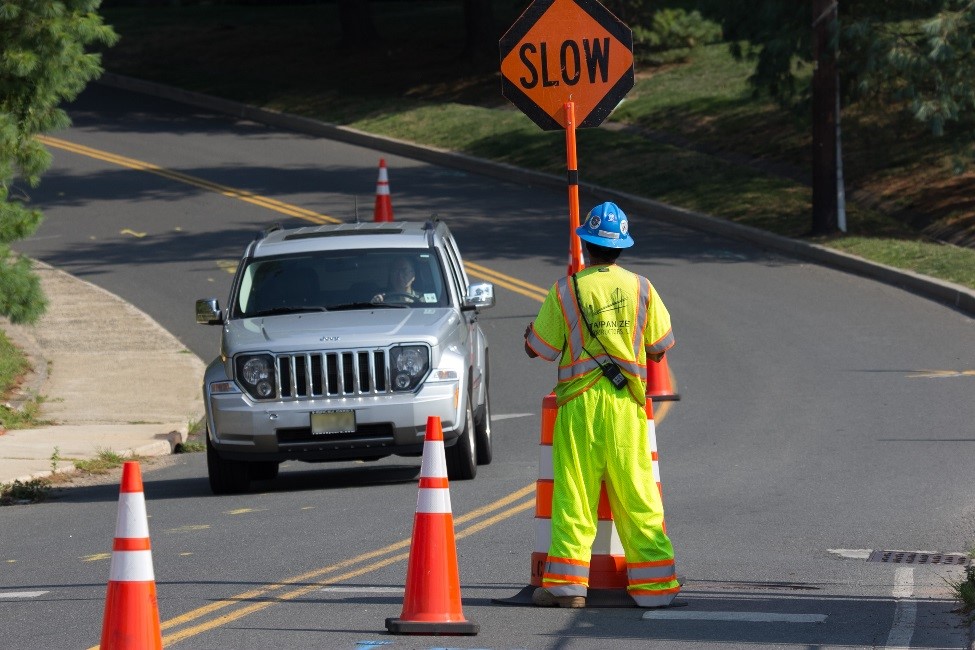
Safety is the number one priority on the New NY Bridge project, and the team would like to remind everyone to practice safe driving habits this holiday weekend, especially around work zones.
Road work along highways and ramps presents safety challenges to both motorists and construction crews. The New York State Thruway Authority keeps the public informed and up to date on the latest construction activities to help ensure the safety of motorists as well as Thruway and Tappan Zee Constructors, LLC (TZC) workers.
According to the Bureau of Labor Statistics, transportation incidents account for the highest number of fatal work injuries. Emergency responders, utility workers, and clean-up and construction crews are among the workers who can be exposed to moving vehicles while on the job.
Work zones are generally identified with bright orange signs, cones, barrels and even different types of barriers. Drivers should look for and always obey signs such as “ROAD CLOSED” or “DO NOT ENTER”. Additional signage will direct you to detours if necessary.
Flaggers also provide temporary traffic control in well-lit locations near work zones. Each flagger is trained and certified to direct traffic, and drivers should always carefully follow flaggers’ instructions. High-visibility clothing with reflective materials makes flaggers visible for at least 1,000 feet, and helps them stand out from their surroundings.
Weekly notifications with specific lane closure locations and times are posted on NewNYBridge.com for the convenience of motorists. Drivers in the Lower Hudson Valley can also visit Thruway.NY.gov, call 511, or tune in to Highway Advisory Radio – 530 AM for up-to-the-minute transportation information and updates.
It takes most drivers 2.5 seconds to respond to a hazard on the road. At about 60 mph, that response time can equate to 200 feet traveled before reacting to an obstruction. With that in mind, the Thruway Authority would like to remind motorists of these important safety tips.
• Slow and SteadyWork zones often have lower speed limits. Keep in mind that the dangers still exist even when workers are not present.
• Expect the UnexpectedOpen lanes and traffic patterns can change several times a day in work zones. You can always call 511, a free traffic advisory service provided by New York State, to get up-to-the-minute updates. Out-of-state callers can call 1-888-GO511NY.
• Follow the SignsArrow boards and signs are there to help guide traffic safely and efficiently through work zones. However, always follow the direction of a flagger if present.
• Keep Your DistanceLeave one car length between you and the car in front of you for every 10 mph you are traveling. This will give you time to react to any abrupt stops that may occur.
• Don’t Change LanesWhen driving through a work zone, make sure to stay in your lane. Changing lanes can create traffic congestion and increase the chance of accidents occurring.
• Patience is a VirtueTraffic can slow down to well below the speed limit near a work zone. Drivers should be prepared to stop if congestion is heavy or if construction equipment is being moved in the work zone.
• Light the WayMake sure to keep your headlights on. Workers and other motorists driving through the work zone need to see your vehicle just as much as you need to see them.
